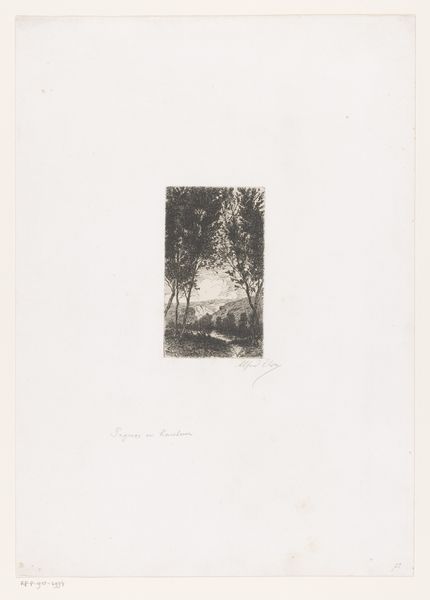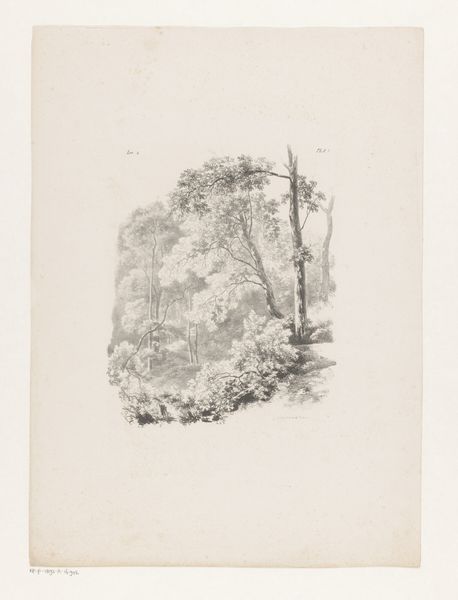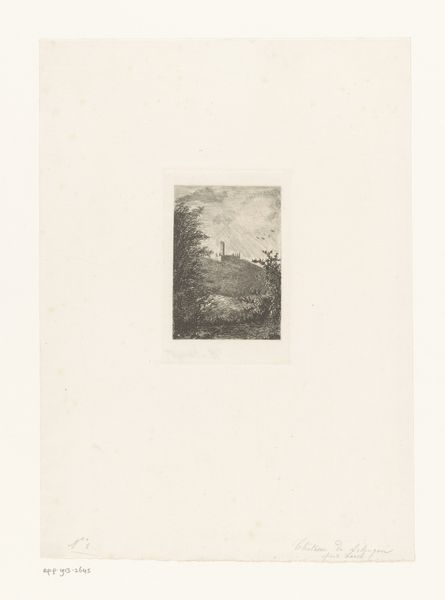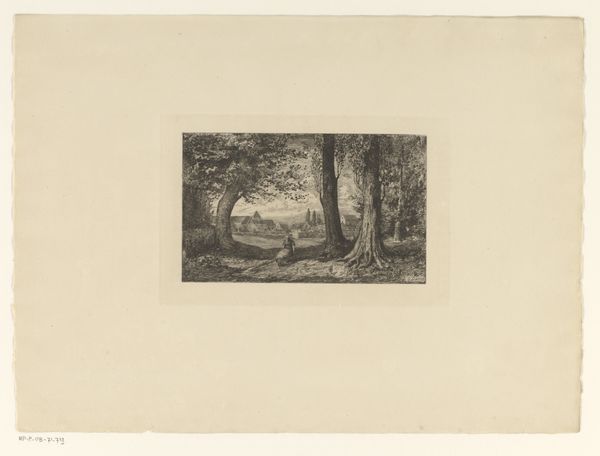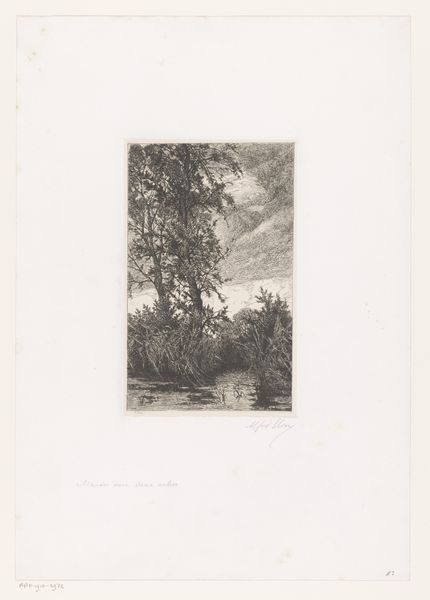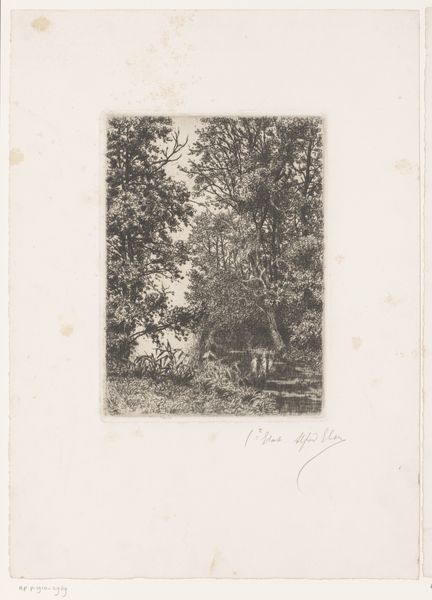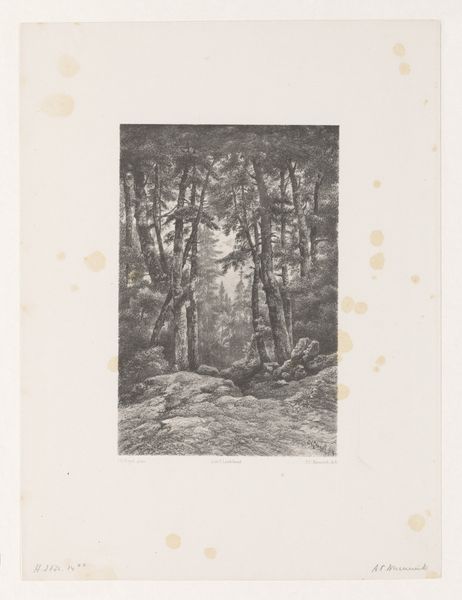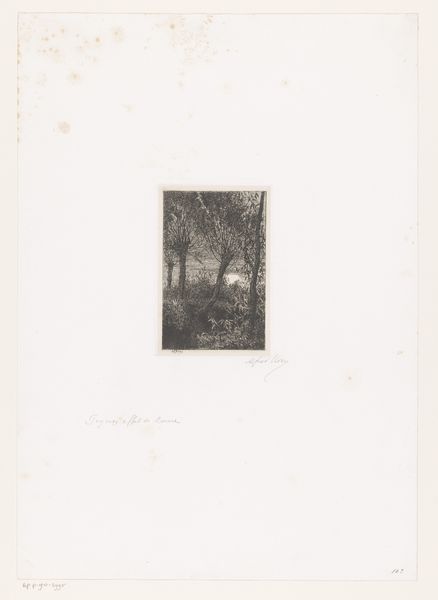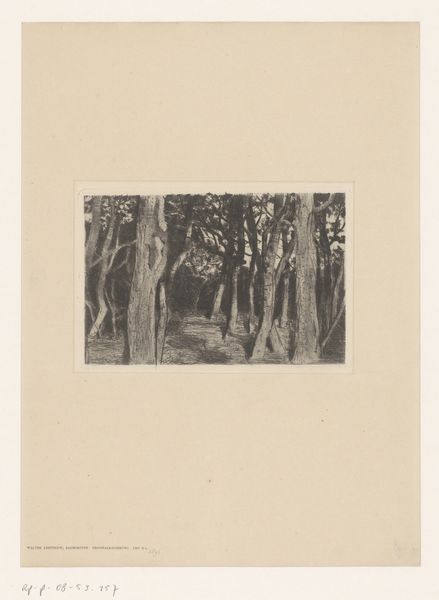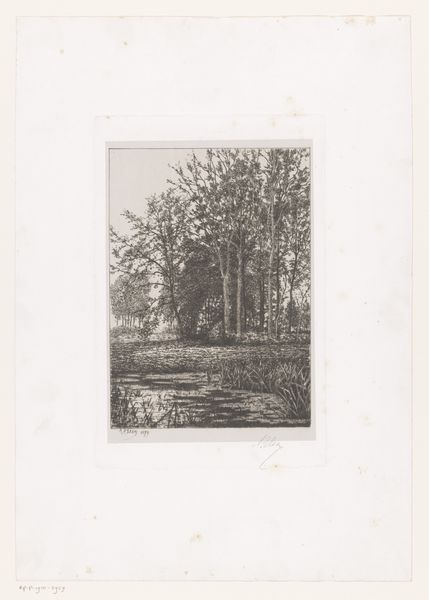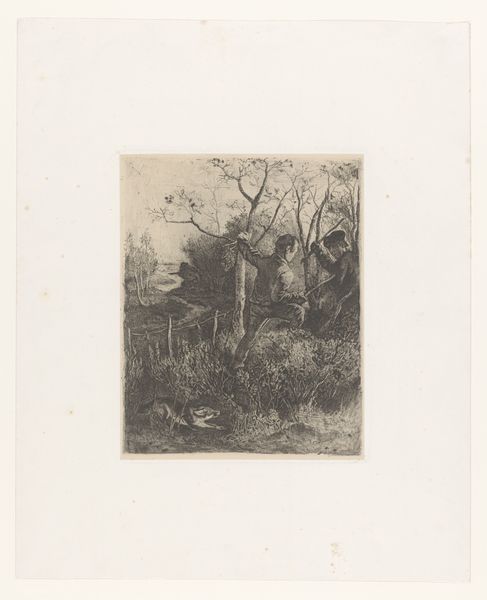
drawing, print, etching, paper, ink
#
drawing
#
ink paper printed
# print
#
etching
#
landscape
#
paper
#
ink
#
forest
#
realism
Dimensions: height 165 mm, width 100 mm
Copyright: Rijks Museum: Open Domain
Editor: Here we have Alfred Elsen's "Bosgezicht met hoge bomen," created sometime between 1860 and 1910. It's an etching in ink on paper. The stark contrast and the almost claustrophobic view of the trees are quite striking. How do you see this artwork fitting into its historical context? Curator: It's fascinating to consider this print within the broader history of landscape art and the evolving role of nature in the public imagination. Remember that the late 19th century witnessed both rapid industrialization and a growing awareness of the environment. How do you think a piece like this might reflect those societal shifts? Editor: I suppose it presents a kind of idealized view of nature, a retreat from the urban sprawl. The density of the trees could almost be a kind of protective barrier. Curator: Precisely! This idealized portrayal has a direct tie to artistic movements like the Hague School in the Netherlands, or even the Barbizon school in France, focusing on intimate, realist scenes of landscapes. There was a deliberate emphasis on national identity rooted in connection to specific regions and nature. So, who was art for and what was its message in times of fast change? Editor: So, works like this become assertions of a particular national or regional identity against the backdrop of increasing globalization? A celebration of the local, maybe even a kind of subtle resistance? Curator: Absolutely! The very act of meticulously depicting this Dutch forest emphasizes its importance, visually enshrining it at a moment when industrial development was threatening such spaces. What impact might something like an etching have, considering its availability to a broader public versus a painted canvas? Editor: That's a great point! Prints allow for wider distribution, bringing these visions of nature to more people, reinforcing that cultural narrative across a broader segment of society. Curator: Exactly! These seemingly simple depictions carry considerable socio-political weight, acting as powerful visual tools for shaping collective identity. Editor: It’s incredible to think how a landscape could play such a significant public role. Thanks for enlightening me! Curator: My pleasure. Art reflects culture, which in turn directs history.
Comments
No comments
Be the first to comment and join the conversation on the ultimate creative platform.
